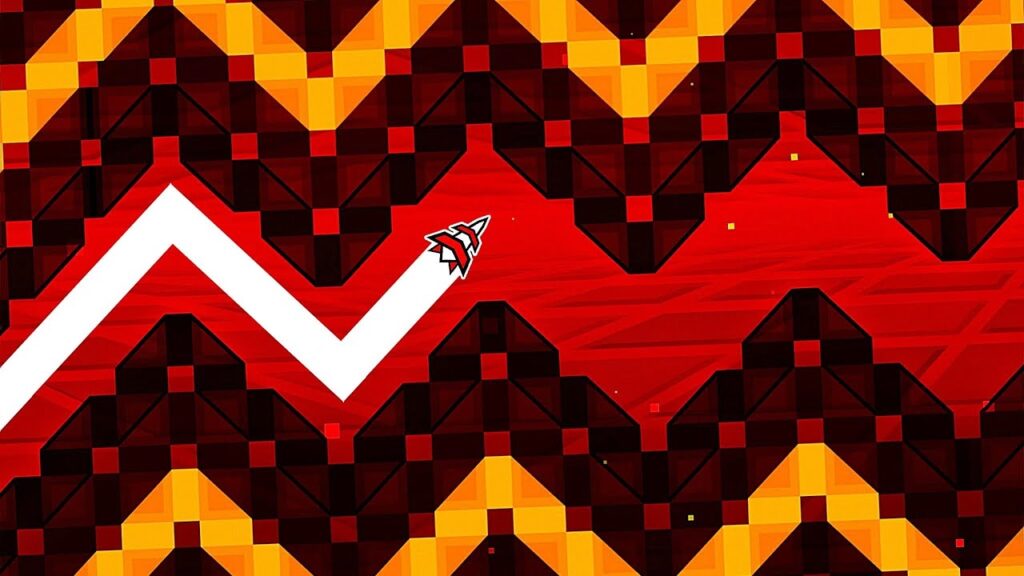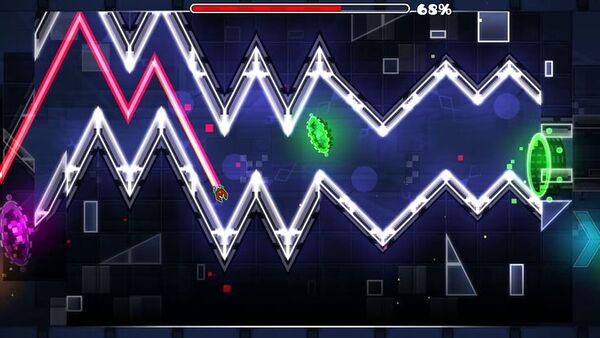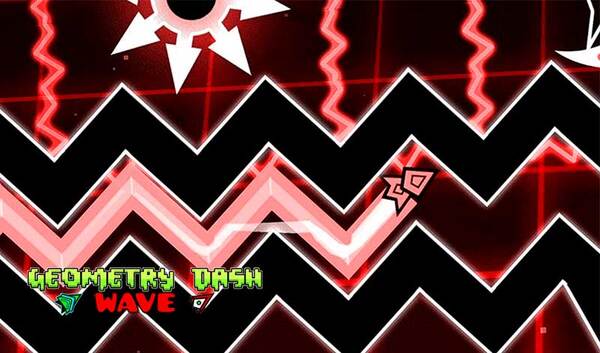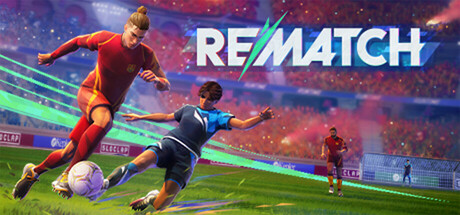Popular Now
Geometry Dash, a rhythm-based platformer, has become a beloved classic within the mobile and indie gaming communities for its brutally challenging levels and precise controls. Among the game’s many mechanics, one of the most difficult to master is the "spamming mode," especially in the context of Wave gameplay. This article delves deep into the technical, physical, and strategic aspects of mastering spamming in Geometry Dash, using the mode depicted in the image—where players navigate tight spike corridors by rapidly tapping or clicking—as the focal point.
Understanding the Wave Mode
The Wave mode is one of the more advanced and skill-based forms of gameplay in Geometry Dash. Introduced in update 1.9, the Wave icon propels players diagonally upward or downward depending on whether the input is held down or released. It is the only mode in the game that allows a rapid vertical zigzag movement, making it both exciting and intimidating for players.
To navigate through tight paths filled with spikes, players must master fine-tuned input control, and this is where "spamming" comes into play. Instead of holding the screen or mouse to guide the wave, players rapidly tap or click to oscillate the wave through narrow spaces. This creates a rhythmic visual and tactile challenge requiring high reaction speed and muscle memory.

The Origins of Spamming in Wave Gameplay
Spamming in Geometry Dash wasn’t a core element when the game first launched. It evolved organically as creators began designing levels that featured tighter corridors and spike-packed environments for the Wave icon. Some of the earliest custom levels that introduced spam-heavy gameplay elements were seen in user-generated levels post-update 2.0.
Players realized that by rapidly tapping instead of holding, they could maneuver through impossibly narrow vertical gaps without crashing into spikes. This mechanic became a skill in its own right, leading to levels specifically designed to test the limits of a player's stamina, precision, and tapping speed.
Physical Challenges and Finger Fatigue
One of the most discussed topics among the Geometry Dash community regarding spamming is its physical toll. Tapping at rapid speeds for extended periods can cause real fatigue or even injury if players are not careful. Many expert players report hand cramps or stress injuries, particularly during long sessions or while playing extended Wave spam segments.
This has led to debates within the community about whether certain levels are “unfair” or require too much physical effort rather than pure skill. For many, it becomes a balance between demonstrating mechanical prowess and maintaining physical health during gameplay.

Techniques for Effective Spamming
Spamming effectively is more than just mindless tapping. It requires rhythm, consistency, and a deep understanding of how the Wave behaves under different conditions. There are several known techniques that players adopt depending on their input device and level requirements:
-
Jitter clicking: Rapidly clicking the mouse using finger vibrations.
-
Butterfly clicking: Using two fingers to alternate clicks quickly.
-
Drag clicking: Dragging your finger lightly over the mouse button to trigger rapid clicks.
-
Tap spamming: For mobile users, tapping quickly on the screen using two thumbs or alternating fingers.
Each technique has its pros and cons, and players often practice each style to determine which suits their gameplay the best.
Wave Spam in Custom Levels
Wave spam has become a staple in many custom levels. These segments often appear in extreme demons, where player skill is pushed to its limits. Levels like “Sakupen Hell,” “Tartarus,” and “Acheron” feature notorious Wave spam sections that are infamous across the Geometry Dash community.
These levels challenge not just mechanical tapping ability but also timing, as the music cues are often used to sync with the tapping rhythm. A well-designed spam section will incorporate music, visual design, and gameplay in a seamless flow, adding to the game’s immersive difficulty.
Device Considerations and Input Lag
Spamming in Geometry Dash can vary greatly depending on the device used. Mobile players face issues like input delay and screen response times, while PC players must deal with mouse debounce rates and polling speeds.
Many competitive players invest in high-refresh-rate monitors and gaming mice with adjustable click response settings to gain an edge. Some even customize their input devices specifically for Geometry Dash, ensuring they can achieve maximum click speeds with minimal physical strain.

Psychological Impact of Spam Gameplay
The high-intensity nature of spam segments in Wave mode often leads to mental exhaustion. Players must remain hyper-focused, maintain rhythm under pressure, and recover from frequent failures. These conditions create a tense environment that can be both exhilarating and frustrating.
Some players report that spam-heavy levels lead to burnout or anxiety, particularly during grind sessions where thousands of attempts are required to beat a single segment. This has led to increased awareness of the mental health aspect of high-difficulty Geometry Dash levels.
Community Reactions to Spam Segments
The community remains divided on Wave spam gameplay. Some players view it as an essential part of high-level play, a necessary hurdle that separates casual players from elite ones. Others feel that it is too reliant on physical conditioning and takes away from the creative aspects of level design.
Community feedback often influences level creators. Some incorporate toggles that allow players to skip or adjust spam difficulty, while others lean into it and create “spam challenges” as stand-alone levels for competition.
Training and Muscle Memory
Becoming proficient at spamming requires intense training. Like learning an instrument, players must develop finger strength and timing through repetition. Many use training levels, which are simplified versions of extreme levels, to focus on mastering spam sections.
There are even third-party tools and apps that help players measure their taps per second and improve accuracy. Players often document their progress and share techniques, fostering a collaborative learning environment within the community.

Future of Spamming in Geometry Dash
As Geometry Dash evolves, so too does its mechanics and community standards. With the highly anticipated 2.2 update on the horizon, many players wonder how Wave spam will be affected. Will new icons or game modes diminish its importance, or will new tools allow creators to craft even more intense spam challenges?
Based on early teasers, 2.2 introduces elements like swing copter and camera controls that could either supplement or replace Wave spam challenges. However, given its entrenched role in difficulty-based levels, it’s unlikely spam mechanics will disappear any time soon.
Conclusion
Spamming in Geometry Dash, particularly in Wave mode, is more than a mechanical gimmick—it’s a complex and controversial skill set that blends precision, rhythm, endurance, and even physical resilience. While not universally beloved, it remains a defining feature of some of the game’s most iconic levels. Whether you’re a fan or critic of Wave spam, understanding its mechanics and the player culture surrounding it offers a deeper appreciation for the hardcore community that keeps Geometry Dash alive and thriving.
















